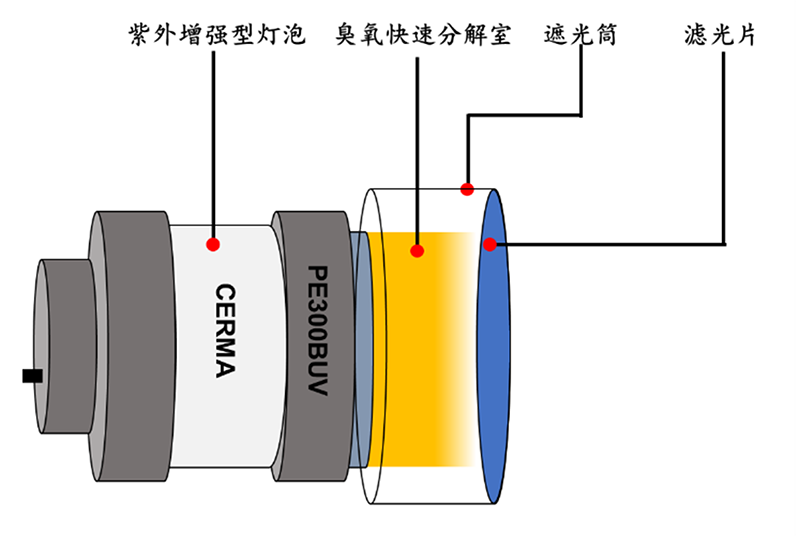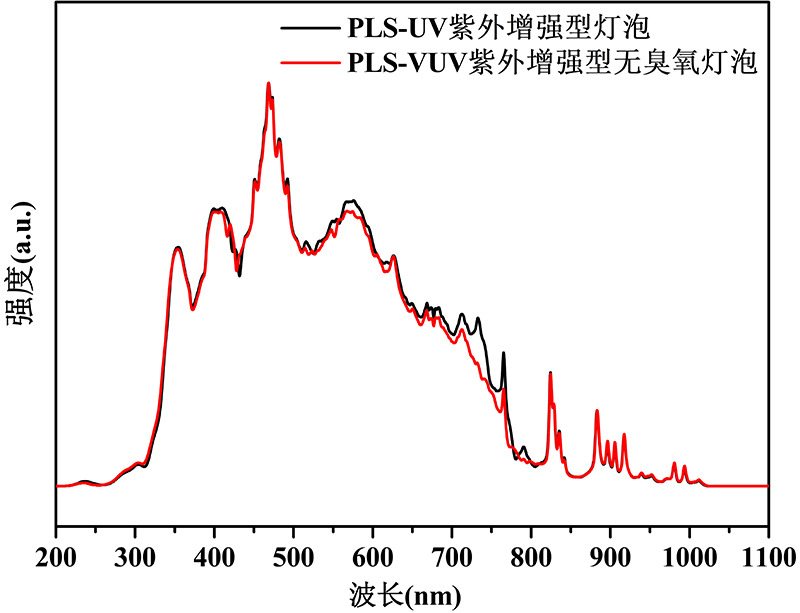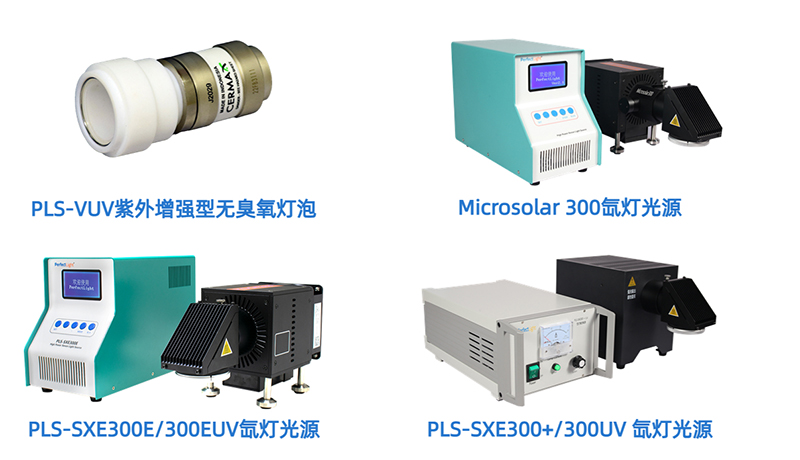In photochemical/photocatalytic experiments, some photocatalysts are UV-responsive, such as TiO₂ and SrTiO₃. The spectrum of a typical xenon lamp light source ranges from 320 to 2500 nm, with limited intensity in the UV region, which cannot meet the experimental requirements of UV-responsive photocatalysts.
Generally, experiments using UV-responsive photocatalysts will choose UV-enhanced xenon lamp light sources as an external energy input source. However, when using UV-enhanced xenon lamp light sources, a strong fishy smell is often noticed. This is because the UV light in the range of 160 to 240 nm converts oxygen (O₂) into ozone (O₃).
The PLS-VUV UV-enhanced ozone-free bulb uses exclusive patented technology, "Device for Preventing Ozone in Ultraviolet Light Sources" (Patent Number: 202222047266.4). It adds a special device to the original PLS-UV UV-enhanced bulb to reduce and decompose ozone from the source, reducing the ozone concentration in a closed environment from 9.97 ppm to 0.16 ppm.
Compatible with Perfectlight Technology Microsolar 300 Xenon Lamp Light Source, PLS-SXE300 E Xenon Lamp Light Source, PLS-SXE300+ Xenon Lamp Light Source.
● Completely removes ozone from the source without affecting UV light output; spectral range: 260 nm~2500 nm;
● Simple structure, easy installation;
● Strong compatibility, compatible with the entire range of 300 W xenon lamp light sources from Perfectlight Technology.


Fig. 2 Comparison of spectra between PLS-UV UV-enhanced bulb and PLS-VUV UV-enhanced ozone-free bulb

Fig. 3 Ozone concentration testing scene
● Wavelength range: 260~2500 nm;
● Power: 300 W;
● Spectral output power density <400 nm: 380 mW/cm2;
● Ozone concentration in a closed environment: 0.16 ppm;
● Compatible light sources: Microsolar 300 Xenon Lamp Light Source, PLS-SXE300 E Xenon Lamp Light Source, PLS-SXE300+ Xenon Lamp Light Source;
